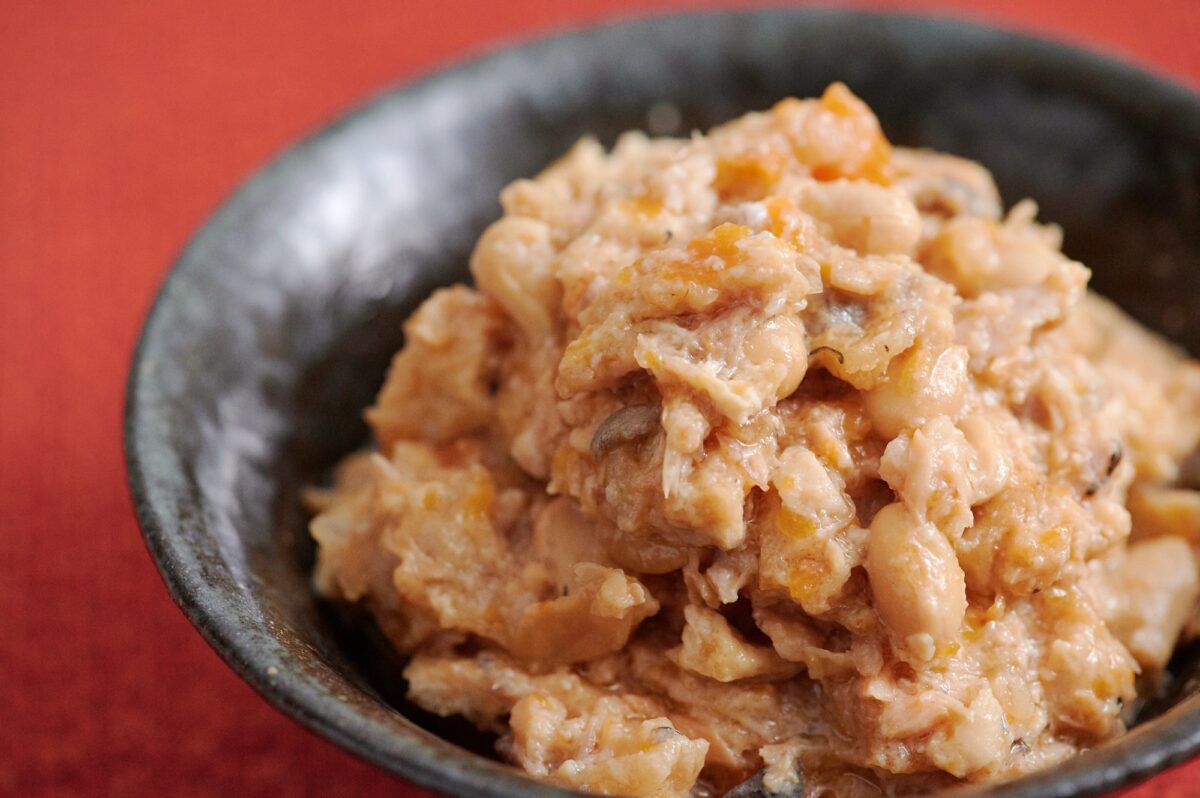
Meet Shimotsukare (or Sumitsukare), a unique and traditional dish hailing from Ibaraki Prefecture. This hearty concoction is a testament to the resourcefulness of the people, utilizing leftover ingredients from the New Year and Setsubun (bean-throwing festival) celebrations. It’s a simmered dish packed with flavor and history, often prepared during the early spring.
Dish Name: Shimotsukare / Sumitsukare
- Region / Location: Ibaraki Prefecture
- Primary Area of Tradition: Western Ibaraki Region
- Main Ingredients: Salmon (especially the head), soybeans, daikon radish, fried tofu (aburaage), carrot, sake kasu (sake lees)
How It’s Eaten / Served
Shimotsukare is typically made by simmering coarsely grated daikon radish and carrots (using a special bamboo grater called “oni-oroshi”), along with cut-up fried tofu, soybeans, and salmon (often the head) in a broth with sake kasu. It can be eaten over rice or enjoyed as a side dish. Some even like to eat it frozen with hot sake during the winter.
Cultural Background and Preservation
This dish has deep roots, possibly dating back to the Kamakura period, with its name having several theories including connections to Tochigi Prefecture (“Shimotsuke”) or its preparation method (“sumitsuke”). Traditionally made in large quantities and shared with neighbors (with a saying that eating from seven households prevents illness), Shimotsukare is strongly associated with the Hatsuuma festival in February, where it’s offered to the Inari shrine with red rice to pray for fire safety and household well-being. While its distinct taste can be polarizing, efforts are made to reduce any fishy smell and make it more palatable, and the custom of sharing it within communities still exists in some areas.
Additional information:
- Sake kasu: The lees (leftover sediment) from sake production. It has a slightly sweet and yeasty flavor and is rich in nutrients.
- Setsubun: A traditional Japanese festival celebrated on the day before the beginning of spring in the old calendar. A key ritual is the throwing of roasted soybeans (“mame-maki”) to drive away evil spirits.
- Hatsuuma (初午): The first “uma” (horse) day of February in the traditional Japanese calendar. It is associated with Inari shrines, the Shinto deity of rice, agriculture, and prosperity.
- Inari shrine (稲荷神社): Shrines dedicated to Inari Okami, often recognized by their red torii gates and fox statues. Offerings of rice, sake, and other foods are common.
- Wara-zuto (藁苞): A wrapping made of straw, traditionally used for storing and carrying various items, including food.
- Oni-oroshi (鬼おろし): A coarse Japanese grater made from bamboo. It produces a different texture compared to metal graters. “Oni” means ogre or demon, possibly referring to the rough texture of the grated vegetables.
The information about regional cuisine featured on this website (Piggy's Grandma of Japan) is summarized and adapted from the Ministry of Agriculture, Forestry and Fisheries of Japan (MAFF) website, "Our Regional Cuisines"Additional commentary is provided based on the unique experiences and perspectives of the site's editors.
The copyright for the original content regarding regional cuisine belongs to the Ministry of Agriculture, Forestry and Fisheries of Japan.
The summaries and adaptations published on this site are intended for informational purposes only. Piggy's Grandma of Japan does not guarantee the accuracy or completeness of this information. For the most accurate and complete details, please refer to the original pages on the MAFF website.


